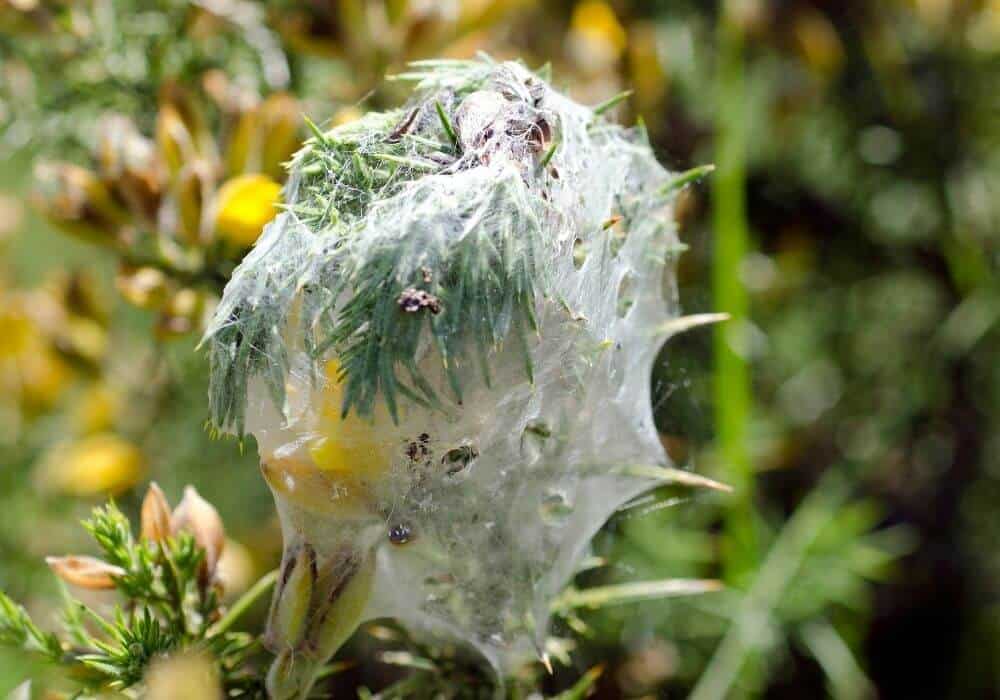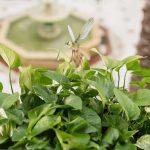The refreshing scent and flavor of mint plants have made it a favorite among some gardeners. Some gardeners, however, see this plant as a weed because it has the tendency to quickly spread and can take over your garden in no time if it’s not contained.
Admittedly, the scent of mint plants may be pretty helpful in keeping some bugs away, but not all bugs.
Bugs like spider mites, loopers, flea beetles, and aphids are attracted to mint plants and can destroy the plant if left unattended, which is why knowing how to get rid of bugs on mint plants is paramount.
Depending on the intensity of the pest infestation, various methods can be used to get rid of invasive bugs on mint plants. You can easily handpick out the bugs if the pest infestation is minimal or introduce beneficial insects like ladybugs to do the work for you.
Table of Contents
What Types of Bugs Attacks Mint Plant?
There is a long list of potential insects and bugs that could cause severe damage to your pint plant. This post will, however, focus on the most common ones you might encounter frequently.
1. Spider Mites

Spider mites, especially the two-spotted species, can be found on mint leaves' undersides and on new growths. Spider mites cause damage by leaving tiny holes in leaf cells.
Once you notice that your mint leaves are dotted with yellow spots and also thin webbing, it probably means you are dealing with a spider mite infestation.
2. Loopers
The Cabbage Looper favors mint plants. Loopers are pests generally known for consuming foliage.
They share certain similarities with caterpillars and can reach 1–2 inches in length, and are normally varying shades of green. They consume large portions of leaves and stems, leaving missing or large holes in foliage.
3. Flea Beetles
Your mint plant will probably suffer from these pests at one time or the other. Fortunately, flea beetles are easy to spot on mint plants as they jump from one leaf to another when disturbed.
Flea beetles are tiny and have a shiny black/bronze color. Just like loopers, they are foliage-loving pests and cause damage by chewing small holes through the leaves.
4. Aphids
Aphids are small insects with fat, teardrop-shaped bodies. They come in different colors and can be found sucking on leaves or flowers.
They secrete honeydew which can facilitate the growth of black sooty mold. Whenever your mint leaves start to curl and turn yellow, you are probably dealing with aphids.
Also, the honeydew they secrete will leave sooty mold on your plants.
5. Cutworms
Cutworms are species of moths and can burrow into the soil or potting media of your mint plant, feeding on its stem. Dealing with cutworms can be a tad tricky since they live in the ground.
The most obvious sign that you're dealing with cutworms is when you notice that seedlings have been severed at the soil line.
6. Thrips
These are slender, tiny insects with distinctive asymmetrical mouthparts and fringed wings. They cause damages to plant by sucking in all the juices from the leaves, flowers, and fruits.
Most thrips species come in either yellow, brown, or black colors with narrow, fringed wings. Curling or distortion of leaves is usually a sign of their presence, and you need to get rid of the thrips before they get rid of your mint plant.
How To Get Rid Of Bugs On Mint Plants

When dealing with bugs on invasive mint plants, you have to adopt various methods depending on the particular pest you are fighting.
In most cases, the methods used in getting rid of aphids might not precisely be effective in getting rid of cutworms.
We will outline specific ways you can adopt in getting rid of common mint plant pests.
1. Getting Rid of Spider Mites on Mint Plant
- Use a garden hose to blast water to disperse them. This method is only effective when the pest infestation is minimal.
- Apply potassium salts to your mint plants. Potassium salts are quite abrasive against spider mites.
- Introduce beneficial insects like ladybugs.
- Use rubbing alcohol to wipe your plants.
2. Getting Rid of Loopers on Mint Plant
- You can handpick them out if the amount of loopers is relatively small,
- The organic compound bacillus thuringiensis can be pretty effective in killing loopers without harming other animals. Trim your mint plant to the ground before spraying.
3. Getting Rid of Flea Beetles on Mint Plant
Combine two cups of rubbing alcohol, five cups of water, and one tablespoon of liquid soap in a spray bottle. Spray on the mint plant to keep flea beetles away.
Use talcum powder to dust your plants.
Place colorful sticky traps near your mint plants to capture flea beetles.
Spray your mint leaves with neem oil.
The use of diatomaceous earth can also control flea beetle infestation. Simply place it close to your plant; once flea beetles crawl over the powder, they will die.
4. Getting Rid of Aphids on Mint Plant
- Try pruning the leaves if aphid infestation is minimal.
- Water can be used to disperse them if the number of aphids is small.
- Reflective mulches can deter some aphids.
- A mixture of water and dish soap can deter aphids, especially if the infestation is minimal.
5. Getting Rid of Cutworms on Mint Plant
- Handpick the cutworms if the infestation is small. Drop them into soapy water to eliminate them.
- Surround your plants with diatomaceous earth.
- Use an insecticide like bacillus thuringiensis. They should be applied in the afternoon before the cutworms come out at night.
6. Getting Rid of Thrips on Mint Plant
- Use of Sticky traps
- Spraying water to disperse them
- The introduction of beneficial insects like ladybugs and pirate bugs can help prey on thrips.
- Botanical insecticides like pyrethrin can control the thrip population.
Conclusion
Growing mint has tons of benefits; its leaves can be used in fruit salads, ice cream, sherbet, and brewed tea. It follows that you need the versatile, high-tolerance plant in your garden. Once taken care of, you'll have a bountiful mint harvest.
Mint plants are easy to care for once you figure out how to control their invasive and weedy nature.
When it comes to pests that attack the herb, knowing how to get rid of bugs on mint plants becomes increasingly essential. We hope this post has done justice to that.
Best of lucks!
Related Posts:
- How To Get Rid Of Bugs On Orchids
- How To Get Rid Of Bugs On Succulents
- How To Get Rid Of White Bugs On Hibiscus
- How To Get Rid Of Gnats In Pothos
- What Causes Pansy Leaves to Turn Yellow?




